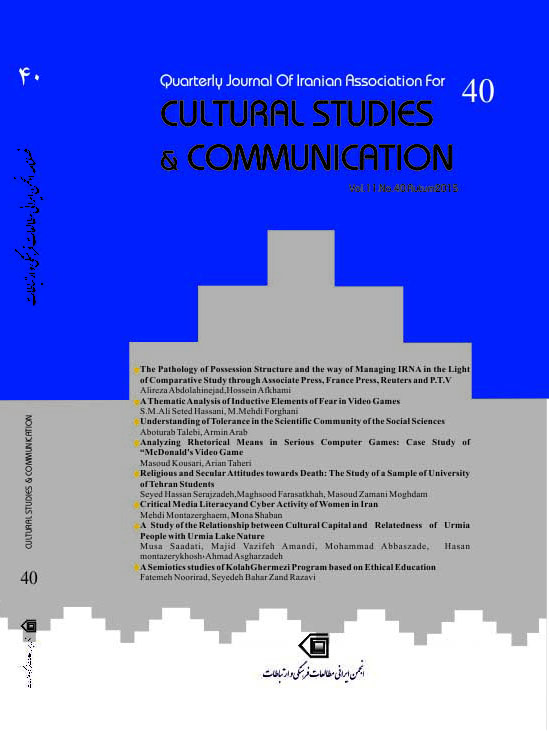- فلیک، ا (1387) درآمدی بر تحقیق کیفی، تهران: نشر نی.
- قائمی، ع (1376) مسئله ترس و اضطراب کودکان، تهران: انتشارات امیری.
- کجباف، م، و ربانی، ر (1381) روانشناسی رفتار ترس، تهران: آوای نور.
- کوثری، م (1389) عصر بازی، تهران: دریچه نو.
- مارکس، ا. ا (1384) زیستن با ترس، مترجم خشنودی فر، گردی، تفرشی و عرشی، تهران: انتشارات کلام شیدا.
- محمد پور، ا (1390) روش تحقیق کیفی، ضد روش 1، تهران: جامعهشناسان.
- مهدیزاده، س. م (1389) نظریههای رسانه، اندیشههای رایج و دیدگاههای انتقادی، تهران: همشهری.
- هاید، م (1373) ترس و ترسهای مرضی، مترجم ش. ز. سلیمی, تهران: انتشارات انیس.
- Bourke, J. (2005). Fear: A Cultural History. London: Virago.
- Bracha, H. S. (2006). Human Brain Evolution and the“Neuroevolutionary Time-Depth Principle:”Implications for the Reclassification of Fear-Circuitry-Related Traits in DSM-V and for Studying Resilience to Warzone-Related Posttraumatic Stress Disorder. Neuro-Psychopharmacology & Biological Psychiatry30, 827–853.
- Bruhm, S. (1994). Gothic Bodies: The Politics of Pain in Romantic Fiction. Philadelphia: University of Pennsylvania Press.
- Carlson, N. R. (2009). Psychology: The Science of Behavior. London: Pearson; 7 edition.
- Dovey, J., & Kennedy, H. (2006). Game Cultures: Computer Games as New Media. Berkshire: Open University Press.
- Global video game revenue.(2013). Retrieved from Statista: http://www.statista.com/statistics/237187/global-video-games-revenue/.
- Hanich, J. (2010). Cinematic Emotion in Horror Films and Thrillers. The Aesthetic Paradox of Pleasurabe Fear. New York: Routledge.
- Hjorth, L. (2011). GAMES AND GAMING, An Introduction to New Media. New York: Berg.
- McQuail, D. (2005). McQuail's Mass Communication Theory. Londen: SAGE Publications.
- Nielsen, S., Smith, J. H., & Tosca, S. P. (2013). Understanding Video Games (Second ed.). New York: Routledge.
- Öhman, A. (2000). Fear and Anxiety: Evolutionary, Cognitive, and Clinical Perspectives. In M. Lewis, & J. Haviland-Jones, Handbook of Emotions (pp. 573-593). New York: The Guilford Press.
- Öst, L.-G. (2007). "The Claustrophobia Scale: A Psychometric Evaluation". Behaviour Research and Therapy, 1053–1064.
- Perron, B. (2004). Sings of Threat: The Effect of Warning System in Survival Horror Games. COSIGN 2004. Croatia: Art Academy, University of Split.
- Radcliffe, A. (1826). "On the Supernatural in Poetry". The New Monthly Magazine 7, 145-152.
- Tamborini, R., & Skalski, P. (2009). Immersed in Media: Telepresence in Everyday Life. New York: Routledge.
- Tancer, B. (2008). Click: What Millions of People Are Doing Online and Why it Matters. New York: Hyperion.
- Van Dijk, J. (2006). The Network Society (Second Edition). London: SAGE Publications.
- Wirth, W. (2007). "A Process Model of the Formation of Spatial Presence Experiences". Media Psychology, 493-525.
